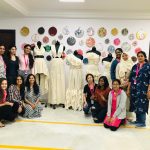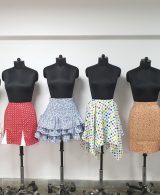Draping – Why is it important for every fashion student?
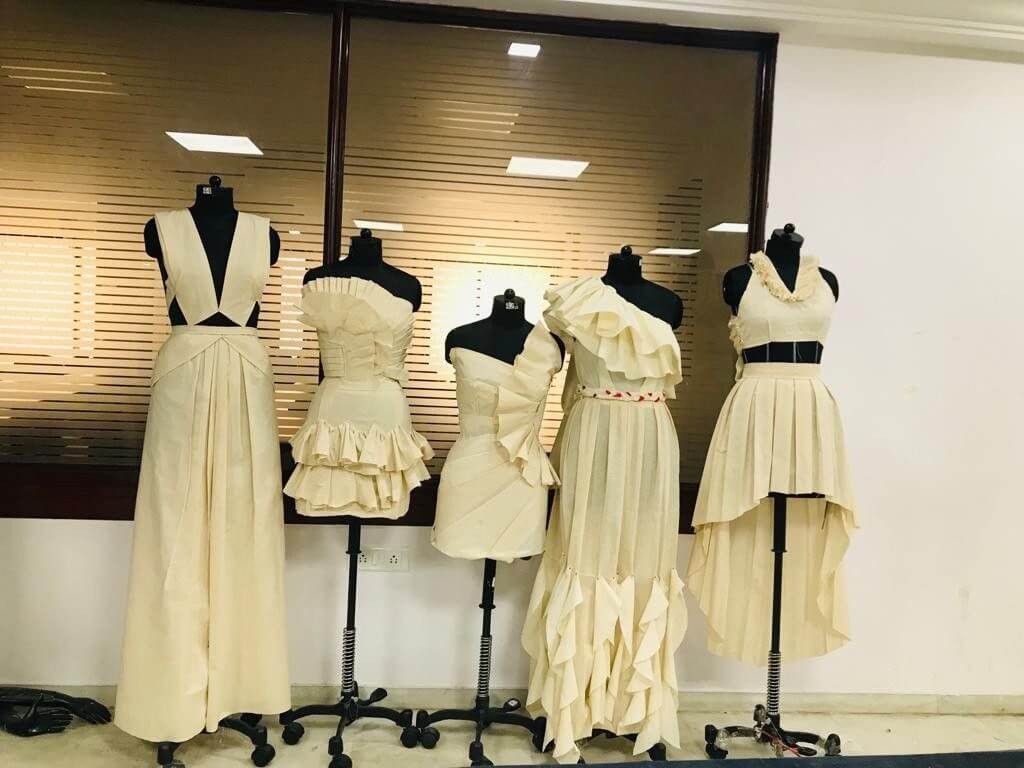
Draping is the art of manipulating fabric directly on the dress form or mannequin and is an important part of fashion design. The three-dimensional pattern making and designing method is primarily manipulated by hands. It allows the designer to understand the fabric and visualize the design on a form. Even though the design process may start with a basic sketch, the experimental process of draping allows the designer to come up with a new and improvised creative method while pattern making.
Why is draping important in fashion?
 Majority of fashion brands do not use fashion draping as part of the design process. In high fashion, couture houses most garments are created through draping. While draping a garment, a designer can immediately gauge the fit of the garment on the body and rectify the design problems. While draping may seem like a laborious task, apparel designers can experiment with fabric and decide where to place the darts, tucks and other design elements.
Majority of fashion brands do not use fashion draping as part of the design process. In high fashion, couture houses most garments are created through draping. While draping a garment, a designer can immediately gauge the fit of the garment on the body and rectify the design problems. While draping may seem like a laborious task, apparel designers can experiment with fabric and decide where to place the darts, tucks and other design elements.
The dress form draping method enhances the creative skills of the designer, which helps them to implement innovative designs in the field of fashion design. The biggest advantage of draping is that it allows for customization. It also results in less wastage of fabric wherein you only do trials before you actually cut the fabric. The process of draping also allows to make paper patterns and designs which can be used further for ideation of the next dress.
History of draping
The existence of the draped garments can be traced to 3500 BCE (Before the Common Era). The evidence can be observed in the paintings and sculptures of the times of the Roman, Greek and Egyptian civilizations. However, the word draping came into being only in the 1930s.
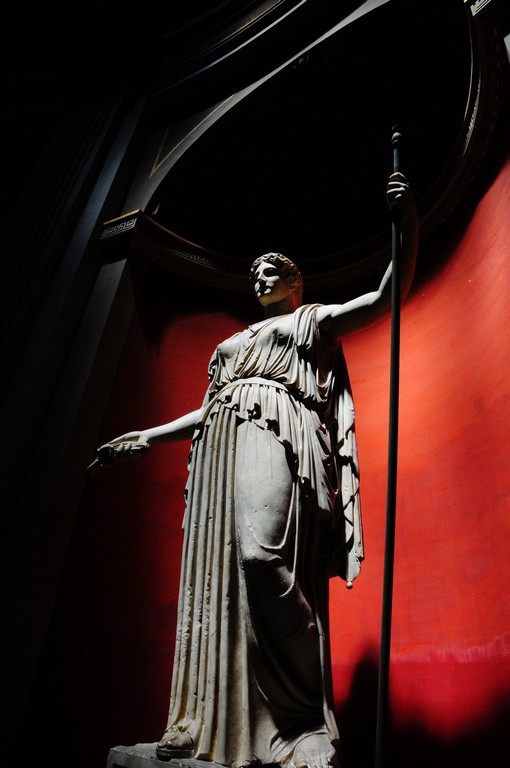
After the invention of the draping technique, drapes contributed heavily in fashion design. The most successful examples of draping technique had been created by Madeleine Vionnet and Madame Grès in the early 20th century.
Madeleine Vionnet method of draping involved using miniature dolls before making up full-scale models in chiffon, silk or Moroccan crepe fabrics. Vionnet sought inspiration from classical Greek statutes, where the clothes looked like it was moving like water. This was the genesis of her introduction of the bias cut for dresses, which was previously used only for collars. Dresses created by Vionnet were luxurious and sensual, yet simple and modern.
Whereas Madame Grès also known as the Queen of the Drape used classical draping style as a source of inspiration for her designs. She was known to use live models instead of dress forms for her draping. Madame Grès created white or cream draped garments that related to the antiquity in European Culture. Components such as posture, coherent form, colour, relationship between light and shadow and the expression were part of Grès’s creations.
Tools for draping
The basic tools used for draping are as follows:

- Dress form/mannequins
- L Square
- French curve ruler
- Measuring tape
- Muslin/ Voiles cloth for draping
- Dressmaker pins
- Pin cushion
- Awl
- Notcher
- Pencils
- Tailor’s Chalk
- Scissors and shears
- Style tape
- Tracing wheel
- Yardstick
Principles of Draping
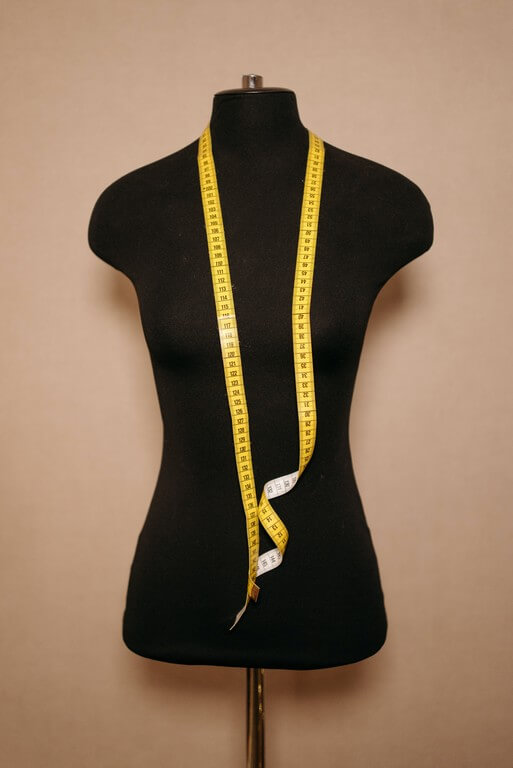
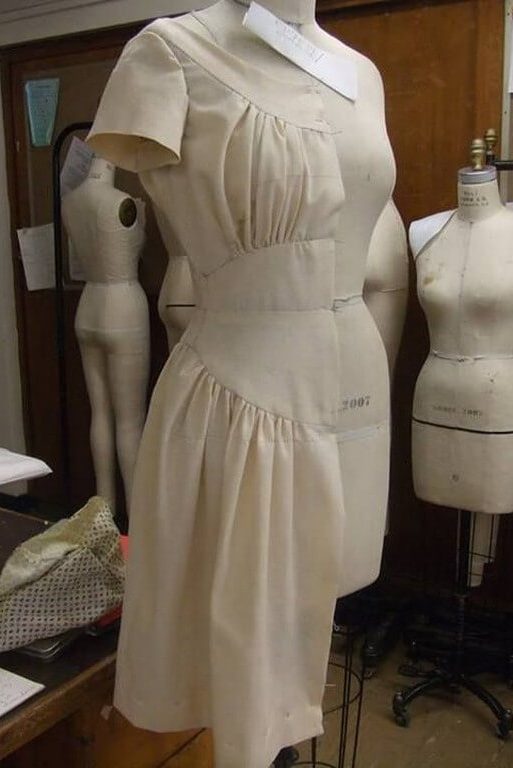
- Fabric must be used on the appropriate grain lines, according to the design.
- While using the dress form/mannequin, the bust line, hipline, and waistline need to be parallel to the floor.
- Usage of good quality pins.
- Seam lines of the dress form need to be well-established before draping starts inorder to avoid the dress from losing shape.
- The muslin piece must be torn from the bolt of the cloth, rather than being cut. This helps to retain the grain lines.
- The grainlines on the muslin must be right angles to each other.
- Grainlines must be marked on the muslin and cross grain must be marked at the fullest part of the dress form/mannequin.
- The fabric must to the dress format the seams and labeled points.
- The curved edges must be gently handled and refrain from pulling the fabric.
- All lines must be clearly marked.
- Ensure all the design and seam lines are marked with small lines or dots at regular intervals, this will help while draping all the pieces of the garment.
- Use an X mark when darts, pleats, and tucks cross seam lines.
- Inorder to create a symmetrical design, drape only half of the design and copy it in full later.
- The muslin/fabric used for draping should be inexpensive and needs to resemble the original fabric.
Process
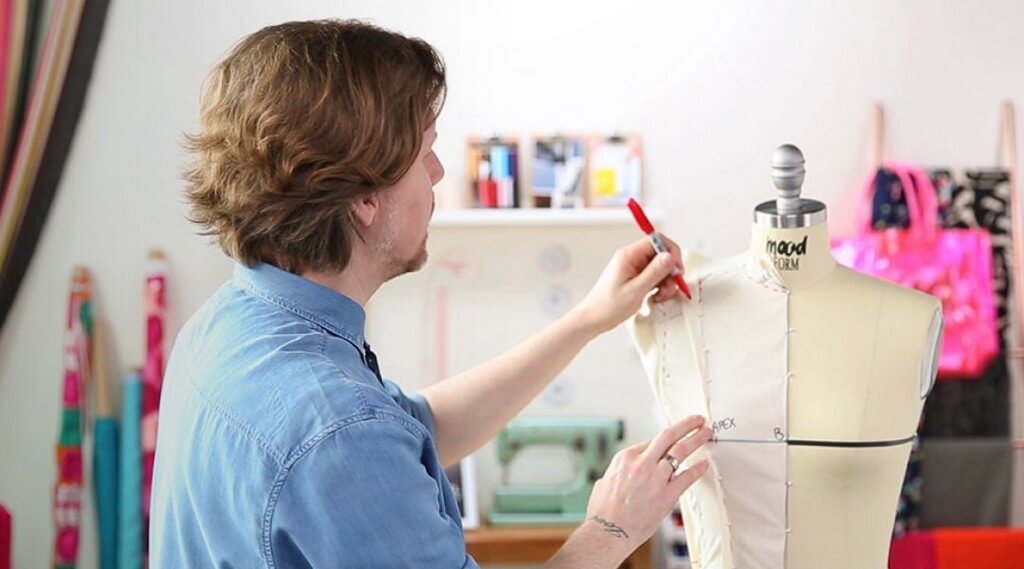
- Prep the dress form
The measurements need to be accurate. The center line of the dress form/mannequin needs to be marked with tape. This ensures that the draping is even across the body. The shape of the neckline can be added with the tape.
- Keep the sketch handy
Before starting with the draping, one needs to have a sketch or reference in mind. This provides an idea of how a fabric needs to be manipulated. This method is beneficial for a novice.
- Use muslin for draping
Using muslin in a better choice as it is inexpensive and helps in the avoidance of wasting good fabric. The reason for using this fabric is to resolve any fitting issues of a garment before cutting the pattern in the final fabric for the garment. However, every design requires a different fabric type, hence a muslin with a weight that is close to that of the final garment must be used. Or even inexpensive synthetic fabrics can also be used in fitting and draping for apparel design.
- Make your foundation and pin it to the dress form/mannequin
A lot of fabrics will require a foundation piece to support the weight of the fabric. This step can be avoided if working with a sturdy fabric. The foundation piece should be attached to the dress form/mannequin.
- Start pinning
There must be enough fabric to cover the area, extra can be cut out later. Draping is sectioned into front and back bodice, front and back skirt. Chalk must be used to mark any additional seam lines or darts.
- Baste the muslin to the foundation piece
Once the draping is done, a contrasting coloured thread needs to be used to baste the fabric to the foundation piece or to itself if there isn’t any foundation piece.
- Trim off any excess fabric
The raw edges of the draping must be hidden in the seams. The basted stitches can be removed at this point.
Draping is imperative for the students of fashion design for the creation of basic pattern and then advance to more complex designs through practice. By directly working with the fabric on the form also helps to understand every adjustment and provides a better understanding of drafting, which is making the pattern based on body measurements.
#draping #fashiondraping #drapingtechnique #drapery #fashiondesign #hautecouture #readytowear #mannequin #muslin #muslinfabric #toille #darts #tucks #designprinciples #jdinstitute #jdinstituteoffashiontechnology #fashiondesigncoursesinbangalore #fashiondesign #newchapter #newnormal #riseagain




